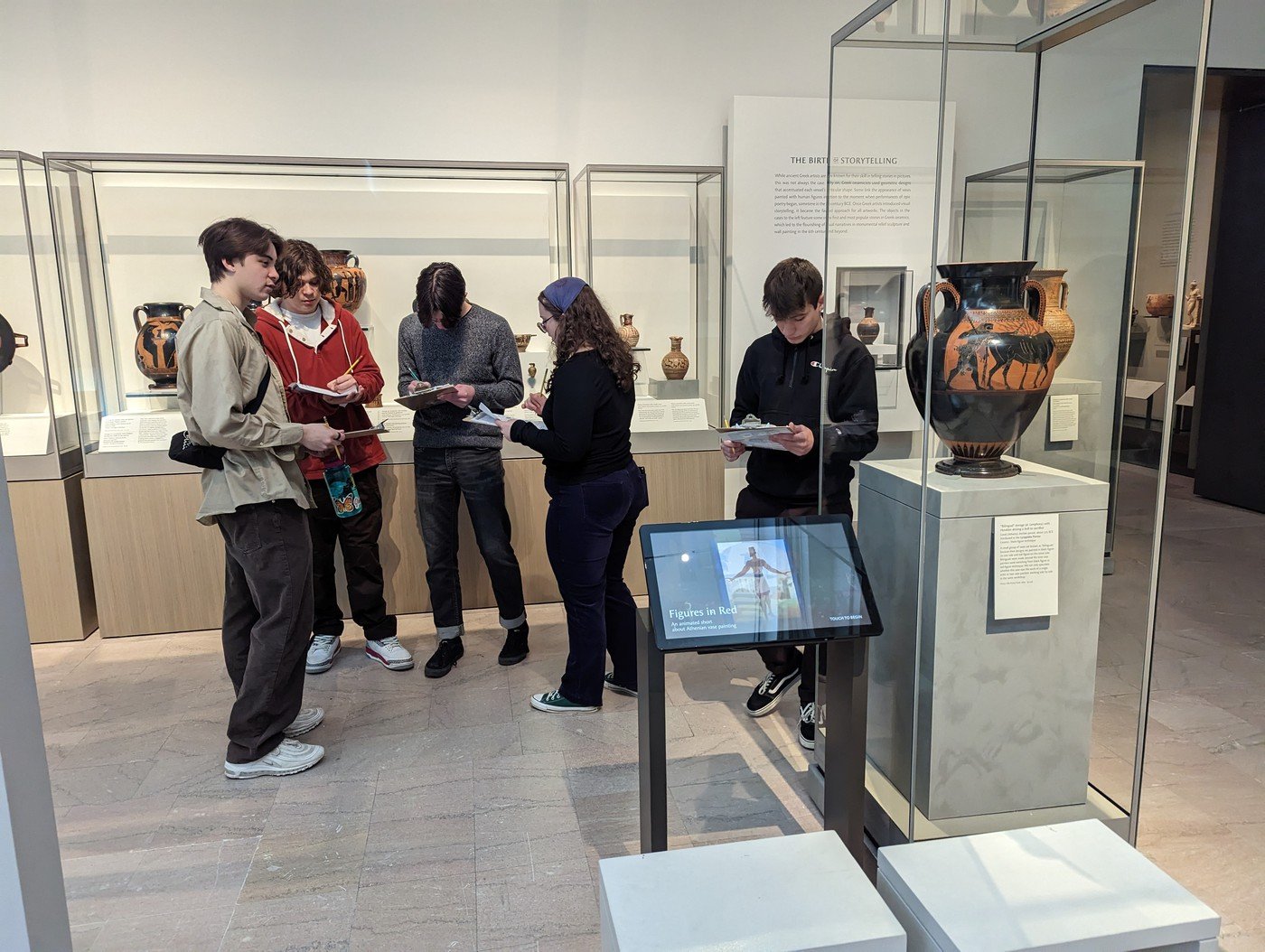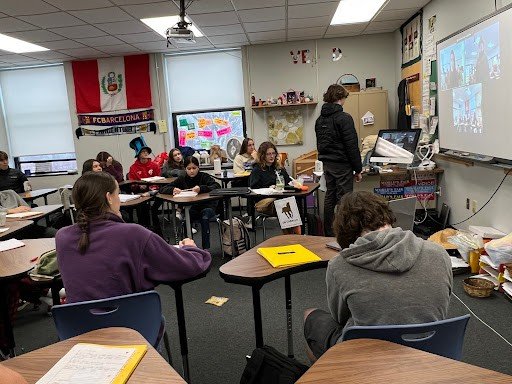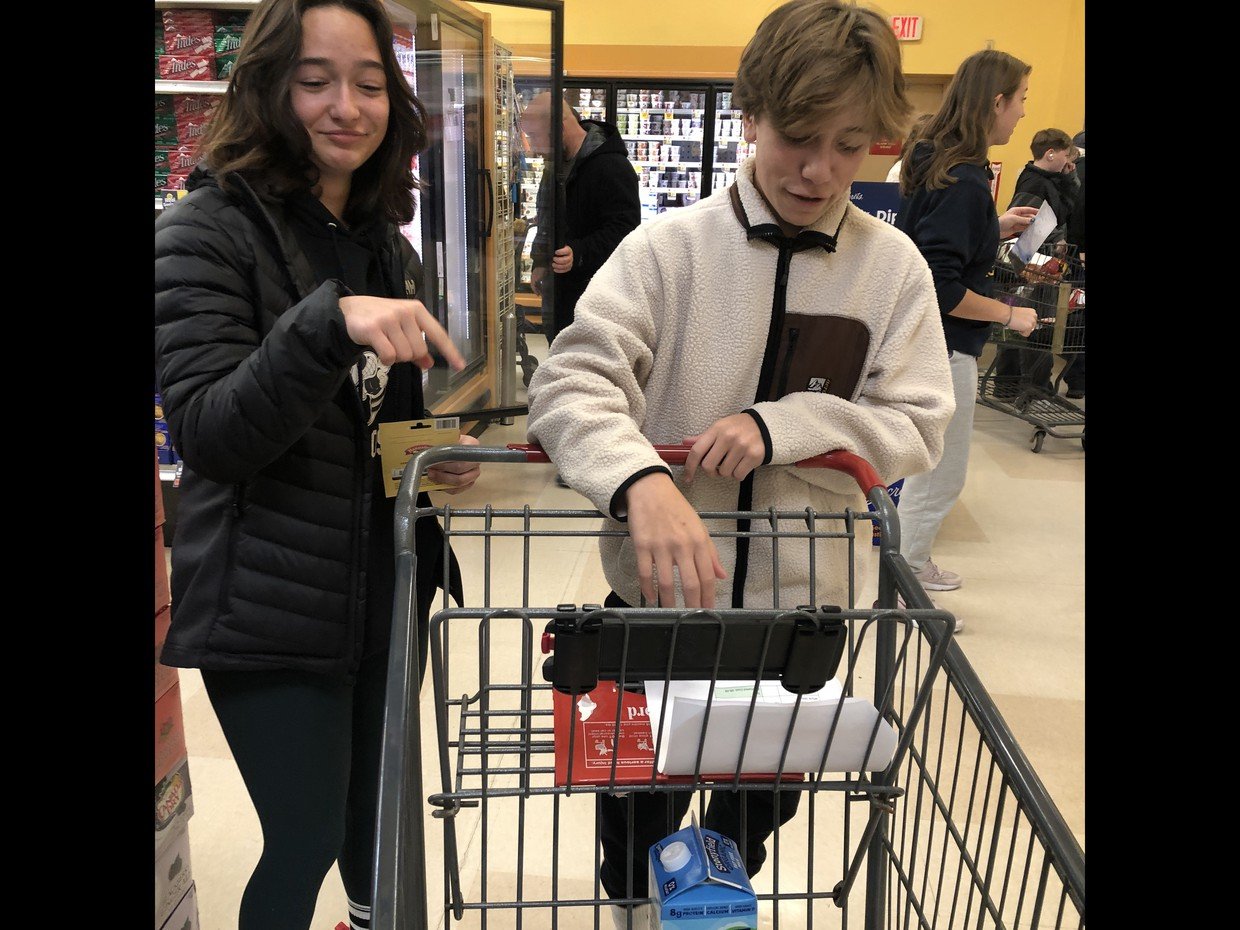On Friday, November 18, twenty-two students and three art teachers visited the exhibitions at the Hall Art Foundation in Reading, Vermont.
Students in Ms. Gravel’s AP Art History class, Ms. Jimerson’s AP Art class and Ms. Piana’s Painting class toured the exhibits and participated in Visual Thinking Strategies with Mrs. Kaija and Ms. Piccoli who are both docents at the foundation. Charlotte Nunan, an AP Art History student also works at the Hall Art Foundation as a gallery attendant on the weekends, led the discussion about Lois Dodd’s painting May in Vermont, 2007.
In presentations before the visit and while on-site, students learned about Dodd as an observational painter and made connections to landscape painters like Thomas Cole and Paul Cezzane and the inspiration Golub got from Ancient Greek and Roman sculpture and his multi-step process that included applying pigment to the canvas and scraping it off. Ariana Winawer-Stein, a student in AP Art, commented that she “… found the range of styles and mediums thought provoking as each artist utilized different techniques to guide the viewer’s eyes and make us think deeply about the meaning of their paintings.”
Annie Hauze, a student in AP Art, commented on the longevity of the artists’ careers by stating, “Something I found inspirational about the exhibits was how both Leon Golub and Lois Dodd made art their life's work. Dodd is still a working artist at 95, and Golub kept going with his art until his death at 87. You can see the passion for their work in both artists' most recent pieces, and the contrast between their earliest and latest works is fascinating. I love to watch growth through art, and to be witness to a lifetime of an artist's work was an incredible experience.”



























